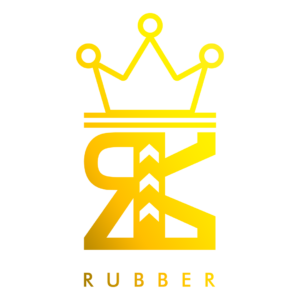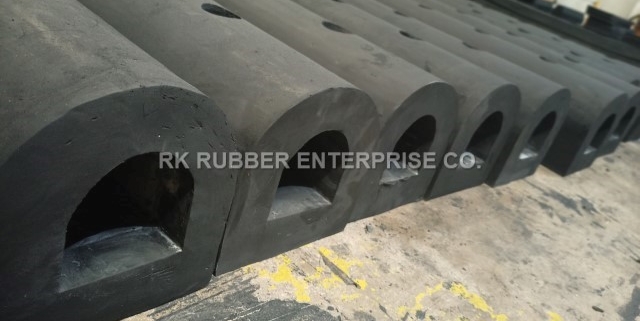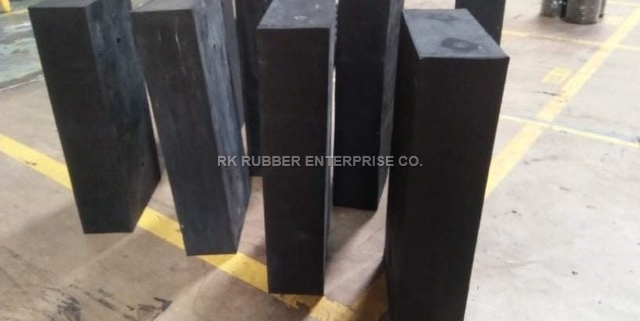Discover The Advantages Of Silicone In Creating Reliable Rubber Products
Silicone, a synthetic rubber material derived from silicon and oxygen atoms, has been widely used due to its unique properties and benefits. It is highly resistant to heat, cold, moisture, fire, and UV radiation, making it an ideal choice for various industries such as automotive, aerospace, electronics, medical devices, construction materials, and consumer goods.
The properties of silicone make it an excellent choice for creating reliable rubber products that can withstand harsh environments. The material can be modified to achieve different levels of hardness or softness by adjusting the ratio of chemical components during production. This flexibility allows manufacturers to create customized products that meet specific requirements for durability and performance.
Silicone-based rubber products are manufactured using compression or injection molding processes. These methods allow manufacturers to produce high-quality products quickly and efficiently while maintaining consistency in product dimensions and quality control.
The use of silicone in manufacturing rubber products has increased over time due to its many advantages compared to traditional rubber materials such as natural or synthetic rubbers.
Brief History of Silicone
The development of silicone as a synthetic elastomer can be traced back to the early 20th century when researchers sought alternatives to natural rubber that could withstand high temperatures and resist chemical degradation.
In 1904, Frederick Kipping discovered the process of synthesizing silicone by reacting dichloro silanes with water, giving birth to the modern era of silicone production. It is highly resistant to heat, cold, and ultraviolet radiation, making it ideal for use in extreme environments such as outer space or deep sea exploration. Additionally, its non-stick properties make it an excellent coating material for cooking utensils and medical devices.
Silicone’s impact on the industry has been significant since its discovery over a century ago. Its manufacturing process has advanced significantly, leading to more cost-effective production methods and widespread availability. As a result, products made from silicone are now ubiquitous in many industries including healthcare, automotive manufacturing, consumer goods manufacturing and construction materials.
The versatility of silicone has made it an indispensable material across various sectors worldwide without which many applications would not be possible today.
Different Applications & Versatility
The section on Different Applications & Versatility explores the diverse range of uses for silicone across multiple industries, highlighting its unique properties and adaptability to extreme environments. Silicone rubber products are known for their exceptional resistance to high temperatures, harsh chemicals, and UV radiation. This makes them ideal for automotive gaskets, electrical insulation, medical implants, and food-grade seals.
One of the key benefits of using silicone is its customization options. Manufacturers can tailor the material’s physical properties to meet specific needs by adjusting hardness, color, texture, and thickness. Additionally, silicone can be molded into complex shapes with great precision using advanced techniques such as injection molding. This level of customization allows designers to create rubber products that offer superior performance and durability compared to other materials.
Another advantage of silicone is its strength properties coupled with cost efficiency. Compared to elastomers like natural rubber or neoprene, silicone offers better tear resistance and elongation at the break while maintaining good compression set values over time. Additionally, since it has a longer lifespan than most other materials used in these applications, it provides long-term cost savings due to less frequent repairs or replacements needed.
The versatility of silicone makes it an attractive choice for a wide variety of industries looking for reliable rubber products that can withstand extreme conditions without compromising performance or quality. Its customizable features allow manufacturers to develop tailored solutions that meet specific needs while offering excellent strength properties at a competitive price compared to alternative materials used in similar applications.
Resistance to Extreme Temperatures
With its exceptional ability to withstand extreme temperatures, silicone rubber has become preferred in industries where environmental conditions demand high performance and durability. High performance is one of the key advantages of silicone rubber due to its thermal stability. Silicone rubber can reliably maintain its physical properties even when exposed to temperatures ranging from -60°C to 230°C, making it an ideal choice for applications that operate under challenging conditions.
Silicone rubber’s excellent thermal stability allows it to outperform other elastomers in harsh environments such as aerospace, automotive, electrical, and medical industries. In these fields, where precision and reliability are paramount, silicone rubber excels by maintaining consistent mechanical properties over a wide range of temperatures. Its thermal stability also makes it resistant to fatigue failure caused by temperature fluctuations, ultimately increasing the lifespan of products made with this material.
Another advantage of using silicone rubber is weather resistance. The material exhibits excellent resistance to UV light exposure, ozone attack and oxidation, reducing the risk of product breakdown from outdoor exposure or aging effects. This feature makes silicone rubber a popular choice for outdoor applications like gaskets, seals and insulation materials that must perform under direct sunlight or other harsh weather conditions without losing functionality or appearance over time.
In summary, the outstanding thermal stability and weather resistance capabilities make silicone rubber a reliable option for many industrial applications that require high performance and durability. Using this material not only ensures consistent quality but also increases the lifespan of products while reducing maintenance costs associated with frequent replacements due to environmental degradation factors.
Durability and Longevity
Like a sturdy oak tree weathering the changing seasons, silicone rubber’s durability and longevity have made it an enduring choice for industrial applications. It can last two to three times longer than other types of rubber compounds.
Its long-term performance can be attributed to the unique molecular composition that allows it to withstand extreme conditions such as high temperatures, UV radiation, and chemical exposure without breaking down or losing its physical properties. As a result, products made from silicone rubber have a longer product lifespan which translates into cost savings for manufacturers.
Silicone rubber’s wear resistance is another factor that contributes to its durability and longevity. Unlike other rubbers that tend to crack or break under stress or tension, silicone has a high tensile strength, enabling it to resist deformation even under heavy loads. This makes it ideal for seals, gaskets, and other mechanical components where wear and tear are common.
Additionally, its non-stick properties make it easy to clean and maintain since dirt and other contaminants do not easily adhere to its surface.
In summary, the durability and longevity of silicone rubber make it an excellent material choice for industrial applications where reliability is critical.
Products made from this versatile material are known for their long-term performance thanks to their ability to resist extreme temperatures, chemicals, and UV radiation while maintaining their physical properties over time.
Silicone’s wear-resistant properties also contribute significantly by enabling seals and gaskets to withstand heavy loads without breaking down or losing shape over time.
Overall, when compared with other materials like natural rubber or synthetic elastomers such as neoprene or EPDM (ethylene propylene diene monomer), silicone provides superior benefits in terms of cost-effectiveness due to its extended product lifespan resulting from increased durability and resistance against environmental factors that can degrade traditional materials quickly over time.
Importance in Pharmaceutical Companies
Silicone has been known for its durability and longevity in creating reliable rubber products. This material is widely used in various industries such as automotive, aerospace, and medical industries. However, it is also crucial to note that silicone plays a significant role in the pharmaceutical industry due to its advantages.
Pharmaceutical companies require cleanroom usage to ensure the product’s cleanliness and safety. Silicone rubber products are ideal for this purpose because they have low levels of extractable impurities which make them suitable for use in cleanrooms. Moreover, silicone rubber products provide consistency throughout production runs, ensuring quality control measures are met. This consistency allows for predictable material behavior during the manufacturing process.
In addition to cleanroom usage and product consistency, regulatory compliance is another important aspect that pharmaceutical companies must consider when choosing materials for their production processes. Silicone meets many FDA regulations and standards, making it an attractive choice for medical device manufacturers. With its ability to withstand extreme temperatures and harsh chemicals while maintaining its physical properties over time, silicone provides a reliable option that can withstand rigorous testing protocols.
Low Toxicity and Environmental Safety
The low toxicity and environmental safety of certain materials used in pharmaceutical production processes can positively impact consumer perception and contribute to the industry’s overall sustainability. Silicone, an organic polymer with a unique molecular structure, possesses these qualities that make it highly advantageous for creating rubber products. Its biocompatibility, non-reactivity to most chemicals, and high thermal stability are some features that make it a popular material choice in various industries.
Due to its low toxicity, silicone is ideal for medical devices that come into contact with human tissue or fluids. It does not react with body tissues and fluids, making it safe for prolonged use within the body. Additionally, silicone is hypoallergenic and does not contain any harmful substances such as latex proteins or phthalates which can cause skin irritation or other allergic reactions. Its chemical stability also makes it resistant to degradation by most common sterilization methods such as steam autoclaving or gamma irradiation.
Silicone’s environmental safety is also noteworthy as it has a minimal environmental impact during its manufacture and disposal stages. It is produced using renewable resources such as sand and quartzite rock which are abundant and widely available. Furthermore, it can be recycled after use without losing any physical properties, reducing waste generation in landfills.
The low toxicity nature of silicone and its environmental benefits make it an attractive option for companies looking to enhance their corporate social responsibility image while delivering safe products to consumers.
Conclusion
Silicone is a versatile material that has become increasingly popular in creating rubber products. Its unique properties, such as resistance to extreme temperatures and durability, make it an ideal choice for various applications. Additionally, its low toxicity and environmental safety have made it an indispensable component in the pharmaceutical industry.
It’s history dates back to the early 1900s when chemists discovered its potential as a synthetic polymer. Since then, it has undergone numerous advancements in research and development, making it one of the most reliable materials for creating rubber products. Its versatility allows it to be molded into different shapes and sizes, making it suitable for various industries ranging from healthcare to construction.
One of the silicone’s significant advantages over other materials is its ability to withstand high temperatures without losing its structural integrity or breaking down chemically. This makes it an ideal material for use in engines and other high-temperature environments where conventional rubbers would fail. Silicone’s longevity is also cost-effective since it requires less maintenance than traditional rubbers.
In conclusion, silicone has revolutionized how we create rubber products due to its unique properties such as versatility, durability, and resistance to extreme temperatures. It has found widespread use in various industries due to its ability to be molded into different shapes and sizes while maintaining structural integrity. Its low toxicity also makes it essential in the pharmaceutical industry where safety is paramount. As research continues on silicone’s properties and applications, we expect even more innovative uses of this remarkable material.




